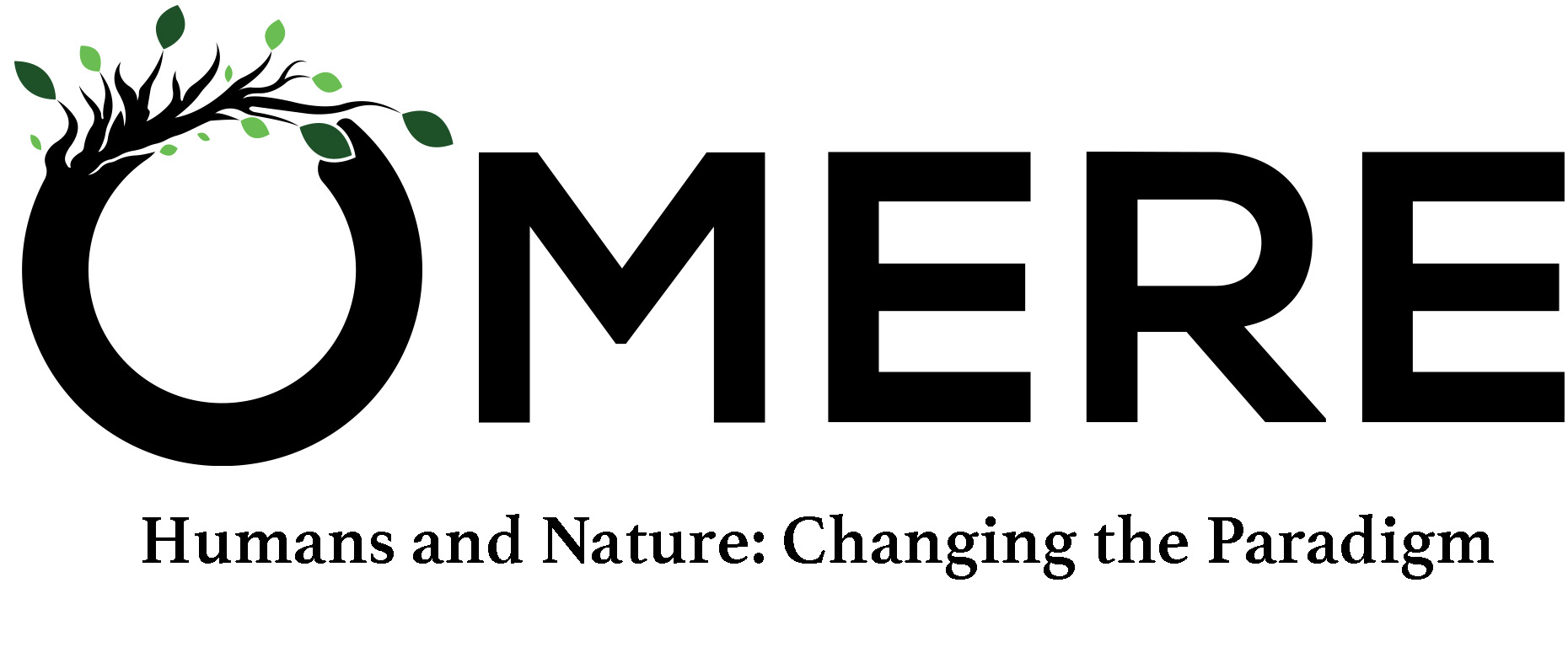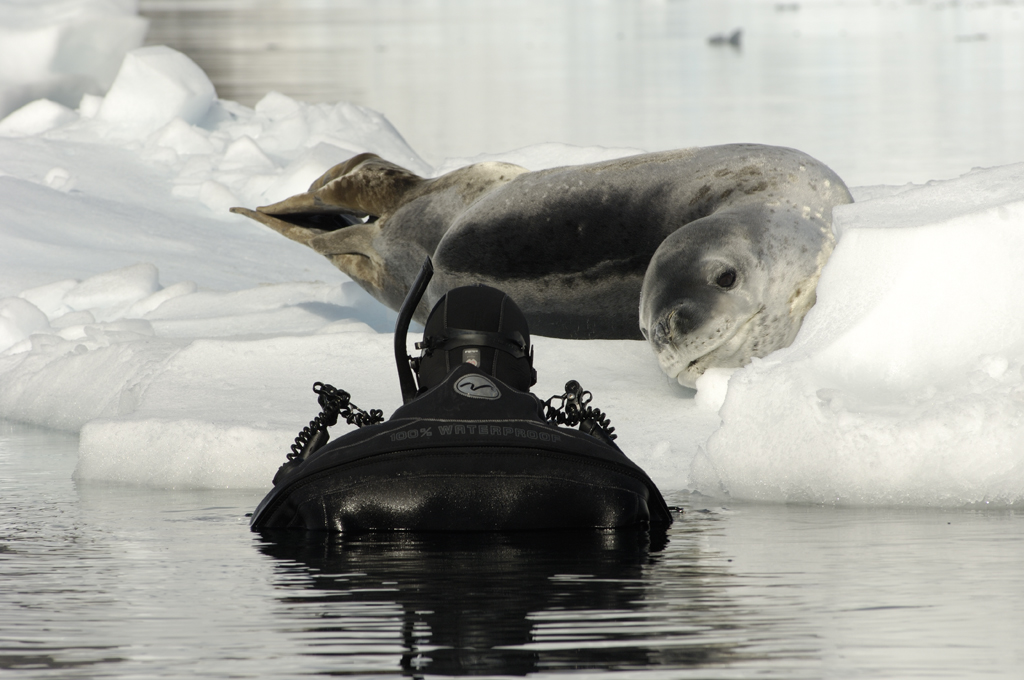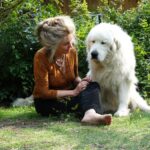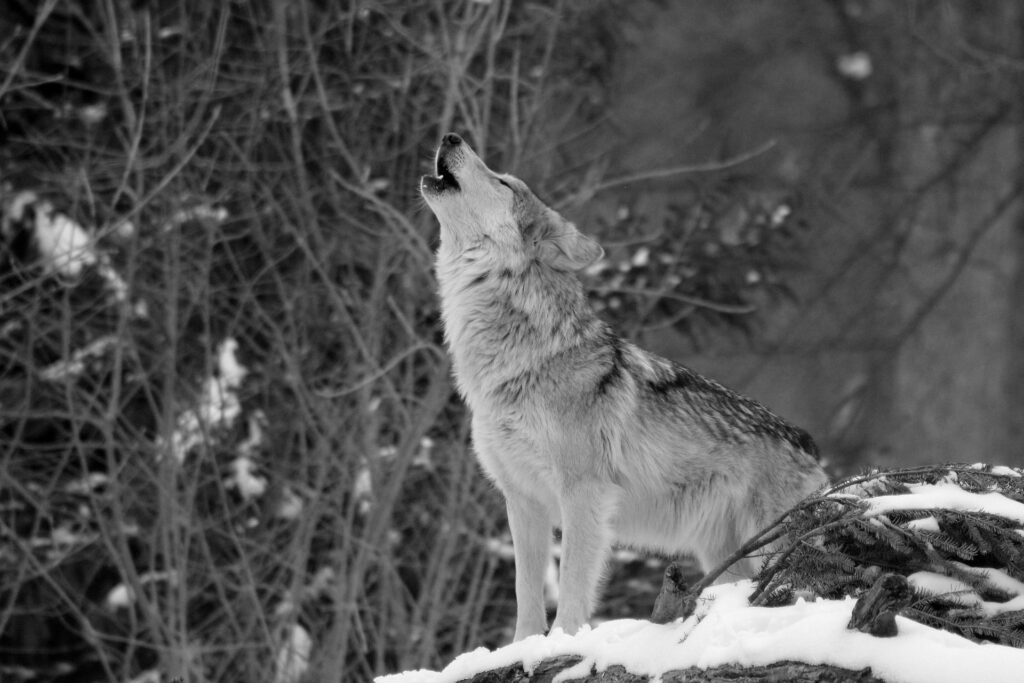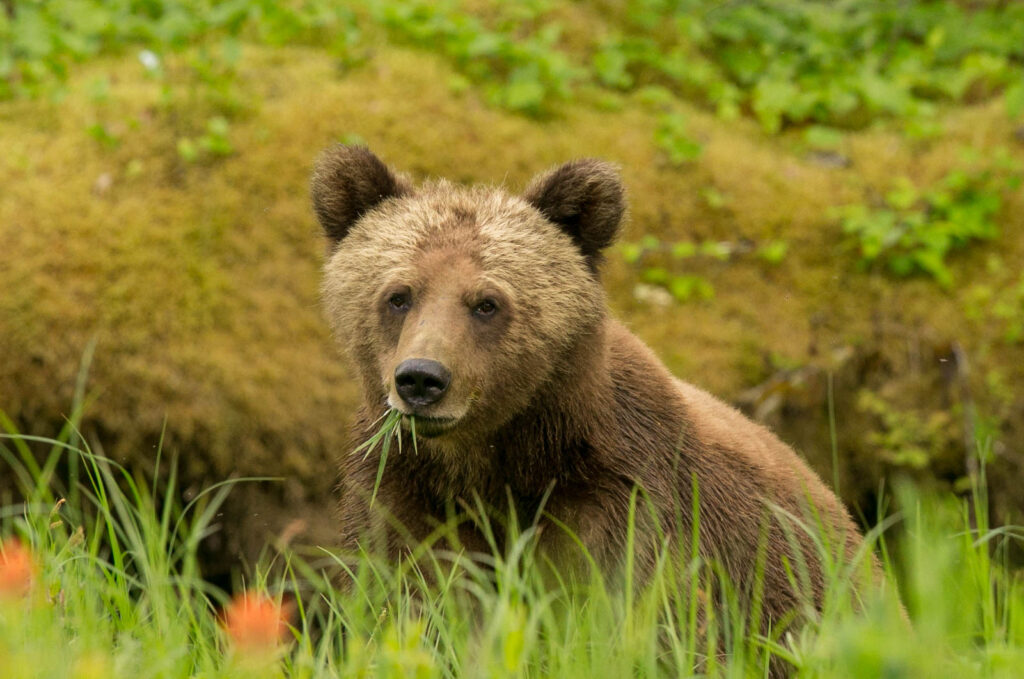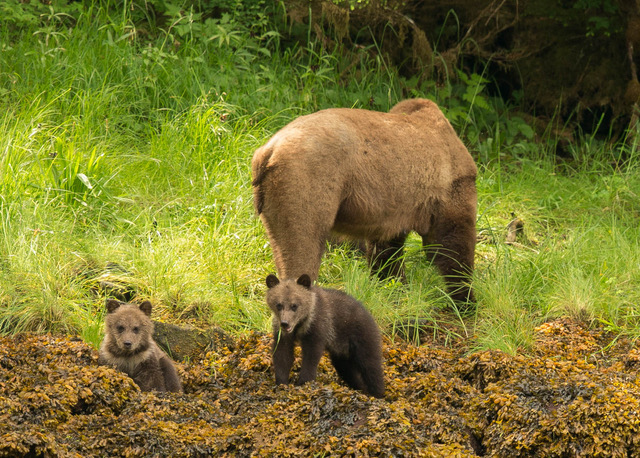Image Credit: Goran Ehlme/Waterproof Expeditions
Compassion draws from a fenceless space. It is different from altruism because compassion comes from an understanding of being connected. True compassion does not stop where one body ends and another begins. In this space of wholeness, the sense of individual identity fades away. There is an unconditional acceptance for the wellbeing of another.
The blue green translucent seas have a sound and silence of their own. Immersed in the thickness of these waters, land-born bodies are pulled by grasping depths, senses are muffled, and communiques, more felt than heard. The land here is the driest continent on the planet and holds the record for the lowest measured temperature – minus eight-nine degrees Celsius.
Biologists call animals living in this frigid realm, “extremophiles.” Compared to African plains and Amazonian jungles, mammalian species in the Antarctic are few. The cold’s heavy hand daunts even evolution. But, what the Antarctic may lack in species numbers is made up by intensity.
Perhaps nowhere else is this intensity greater than in the form of a leopard seal. Outside whales, leopard seals are second only in size to the gigantic elephant seal. They are huge. Whether cantering on the ice or undulating under water, leopard seals weigh in at nearly a half ton and wield immense, dense bodies with power and precision. Their size and steel-strong jaws, lined with points of ivory, have garnered them a reputation as fierce and intolerant “top predators.”
Similar to other carnivores, scientists paint leopard seals in colors of evil intent. They are maligned not only because of what they do for a living – eat other animals – but they can, but don’t, eat humans. Rarely does a human fall prey to a sea leopard. Subsequently, it is the potentiality, not actuality, that a leopard seal could kill a human which labels them guilty before proven.
Leopard seal notoriety is not helped by video footage showing hulking, salivating seals in pursuit of helpless penguins or by their visage when, in the face of uncertain strangers, the seal’s benevolent, warm and fuzzy, perpetual smile suddenly transforms into a giant, gaping teeth-ringed maw. It was this uneasy mystery surrounding the seal which drew Paul Nicklen and Swedish colleague, photographer Göran Ehlmé, to the Antarctic in search of these spotted wonders.
Nicklen is an underwater photographer. Almost daily, he forsakes the open sky to inhabit the planet’s breathless skin. Of all the oceans he frequents, his favorite is the shockingly cold waters of the southern pole. Underwater photography is not straightforward or easy. Beyond physical and sensory limitations imposed by a watery world, working with submarine subjects has its ethical challenges. Most methods for entering the subsurface world are disruptive. Motorized boats tear at ocean’s tender flesh, driving engine noise into sea life cells and bodies and while subtler, divers insert themselves, uninvited, into private lives and homes.
Nicklen appreciates the importance of honoring animal needs and makes a point of photographing with the caveat, “I want to get close, but I also never want to harass an animal.” His camera work benefits from this ethic of humility. In the role of guest, visitors are more likely to see their subjects at ease, engaged in their daily routines uninterrupted by the worry of human intrusion. Charlie Russell, who lived shoulder to shoulder in grizzly bear society for most of his seventy some years, agrees. A quiet demeanor is requisite. “Being with animals, you have to have a certain nonchalance – that’s the main ingredient. It makes meeting an animal a non-event.”
In this instance, Nicklen wasn’t given any time for nonchalance or humility. Immediately after plunging from the side of the sailboat into the ice-floe dotted sea, he was met with a leopard seal’s cavernous mouth rushing toward him, stopping only inches away. Her gaping maw nearly covered his mask and camera. “She opened up her mouth and her head is twice as big as a grizzly bear, and I am staring down her throat.” The fearsome encounter lasted briefly. As quickly as she had appeared, the seal disappeared, leaving Nicklen wide-eyed, wondering and watching the immense form melt into blue.
Nicklen was relieved to find that the seal seemed to have satisfied any concern she might have had. But, he soon learned that the seal wasn’t done with the diver. She had other plans. To her mind, their initial acquaintance was the first note in a much grander composition. Within moments, the seal returned carrying something, someone, in her mouth – food. The seal had brought the diver food.
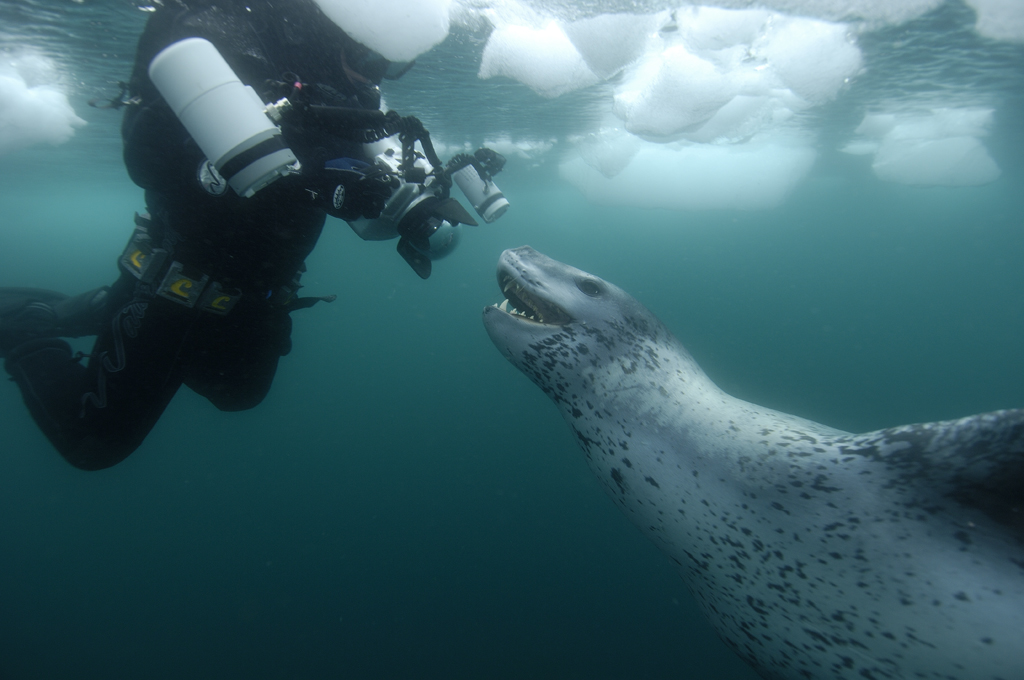
Image Credit: Goran Ehlme/Waterproof Expeditions
Wildlife food choices are largely based on availability and nutritional content depending on species and conditions. Orca diets, for example, vary with culture. Some orca communities have limited fare, others are quite catholic. For the most part, Southern Resident orcas living off the Washington state coast feed on salmon, eighty percent of which is comprised of fatty-rich Chinook. Tragically, this narrow dietary bandwidth has created vulnerability in the Anthropocene. Salmon shortages from overfishing and river damming have decreased orca food access to such precipitously low levels that the species is starving to death.
When a variety of food types is available, choices are influenced by nutritional yearnings. Russia’s brown bears often switch from salmon to pine nuts even though fish abound. While salmon offer calorie-rich ingots, it is the dwarf pine’s nuts which create life-saving honeycombed fat needed for insulation while bears overwinter, asleep in their snows covered dens. Temperate and tropical animals also exercise dietary specificity. African elephants strategically select foodstuffs to optimize seasonal changes in nutritional needs and intake volume by changing over to roots and bark from grass during months of peak heat. Leopard seal diets are similarly eclectic. Krill, tiny sea shrimp, sifted through sieve-like teeth, make up half of seal intake, but the rest is divided between various species of fish, squid, crustaceans and – penguins which is who the seal was holding when returned to the diver.
Swimming up to Nicklen, the leopard seal pushed the frantic bird toward him. When Nicklen did not respond, the seal tried again with a second penguin, then again, and again. “She had just caught a penguin chick — she was holding it by the feet — and the penguin is flapping, trying to get away from her. And she would sort of line it up with me, and when it was lined up perfectly with me she would let it go, and it would swim off, she caught it, she did this over and over.”
It was obvious that the seal had no hostile intentions. Strange as it seemed to the diver, she seemed to be showing concern for his welfare. Notwithstanding high tech gear, a human in the frigid, temperamental waters of the Antarctic is vulnerable. “I think she realized quickly in this encounter that I was not capable of catching a live, moving, swimming penguin, and so she brought me another penguin. She did all these different attempts to feed me live penguins.”
Nicklen was stunned. Close encounters are not unusual for veteran divers like Nicklen and Ehlmé. Whales, dolphins, and other seals often approach, accompany, and even play with humans who venture to unnatural depths. But, the encounter with the leopard seal was different. She was not acting in any ways he had seen or experienced before. Not only did the seal make several attempts to provide the diver with penguins, she continued to do so every day he dove.
Nicklen’s tense excitement is captured in his emotionally charged telling and Ehlmé’s vivid imagery. We feel the stalking cold, hear the raspy breath through the ventilator mouthpiece, and watch, with equal awe, as an enormous, looming spotted seal materializes inches away in the icy murk. “All of a sudden here’s a top predator, and not only are you getting to see it, it’s interacting with you; it’s trying to force-feed you penguins, it’s trying to take care of you. It’s a very, very humbling thing. . . Just to flop yourself into its world and for it to spend that much time and energy trying to figure out who you are and to interact with you.”
Nicklen’s comments reflect an appreciation for the ways of the wild. For most humans, seeing a dolphin, seal, or orca is exciting, but little thought is given to what it takes to survive. Such engagement involves a serious expenditure of energy. Although the seal made multiple trips in fairly quick order to supply the diver with additional penguins, her efforts entailed a lot of work. Their sessions together lasted four days. As Nicklen underscored, four calorie-expensive days used for someone else’s welfare is significant.
No matter how powerful someone is or how plentiful food may be, any distraction from the job of staying alive is risky. Wildlife runs on a thin margin. Injury, a missed meal, and inattention easily spiral into disaster and death. Evolutionary biology understands Nature as a strict bookkeeper who keeps tally to ensure that life’s equation of costs and benefits balance out. There are diverse dimensions to Nature’s spreadsheet. Every action and every relationship has psychological, social, and physical consequences, all of which affect a living being.
In the eyes of Charles Darwin and friends, Nicklen posed more of a liability than any vantage. The time that the leopard seal spent with the diver put her short- and long-term survival budget in the red. Nicklen was neither a member of the seal nor local marine communities, so there was no genetic, cross-generational gain or collateral payoff. Even if he wanted to, being so ungainly in the marine world, the diver could not reciprocate or offer the seal protection, food, or advantage. He was a transient guest without community ties, earth bound and bound to leave for good. On top of this, he was human, a species that has caused thousands upon thousands of seal deaths in the course of plundering the oceans for fat, flesh, and fur. Although other seal and whale species may have been hit harder than “sea leopards,” no one forgets the terror of exploding harpoons and guns and blue waters turned red. Elephants are not the only ones with long memories.
Given this perspective, we are compelled to expand the aperture of analysis to understand what seems to fly in the face of traditional theories of behavior and biology. Nature abhors illogic as much as vacuums. All of the evidence, and theory, suggest that something else must be involved to keep the balance sheet intact. The most parsimonious and obvious explanation is what Nicklen himself surmised: the seal was trying to help. The diver might have felt well within the range of safety, but given the length of time and effort measured in penguins alone, the leopard seal exhibited a heartfelt desire to aid someone who, in her mind, was literally out of his depth. Even so, why was helping this man so important? What purpose could it serve the seal?
Neuroscience asserts that while details of seal and human brains may be tailored in unique ways to navigate their respective environments and needs, both species share fundamental emotional tendencies and affective systems. The leopard seal’s sympathetic offerings are consistent with what brain science predicts: seals and other animals have the capacity to care for one and another. Even though a human was the recipient of her care, it is within psychobiological expectations that the seal would reach out. It is not unusual that animals extend consideration to kin as well as kith.
Conventionally, leopard seals have been regarded as an exception to the rule of care. Much like their frightening reputation as ask-no-question vicious killers, the image of leopard seals as selfish solitaries is also incorrect. Along with pumas, who are similarly labelled asocial loners, seals spend more time with each other than supposed. Both participate in “cooperative hunting” and share food with family and friends. They may not travel in close knit herds as do elk and elephants, but pumas and leopard seals are part of an active, connected culture.
Neither is it unusual for an animal to come to the aid of a human in distress. There are innumerable instances when an animal has put his life on the line for someone unrelated such as the dolphin who circled and protected a human swimmer from hungry sharks. What we don’t know is whether this particular female seal makes it a habit to aid others the way she did with Nicklen, nor can we ascertain if her actions are common among leopard seals. He has not been welcomed with the same concern by other seals. This situation was different.
In keeping with previous dives, the purpose of Nicklen’s exploration was to investigate and film underwater mysteries. On this occasion, through the seal’s enlistment, the diver was dislodged from his usual role of observer to become the observed, a co-participant in an unfolding, profoundly emotional experience. The sudden reversal from subject to object catapulted Nicklen to a realm beneath the material offerings of penguins, a place where, even in the silence of the sea, he heard the seal’s heartfelt care. Her concern and generosity, rare among urbanized humans, touched the diver deeply. “It’s embarrassing to admit this. . . I’d fall asleep at night with tears coming down my cheeks. . .I was just so grateful.” Yet, it is unfair to both seal and penguin to regard the sacrificed birds as merely units of food. Seals and other carnivores do not kill wantonly. Innumerable observations, such as the video showing an African leopard trying to care for an infant baboon whose mother the leopard had just killed, attest to carnivores’ deep appreciation and understanding the sacredness of life.
As time went on, the seal’s involvement increased. When efforts to feed the diver continued to fail, the seal’s concern turned into impatient frustration. “She got so tired of me being unable to accept one of her penguins that she grabbed it and she flipped it on top of my head.” Nicklen also became increasingly engaged. “I think that’s why I get emotional, because we had such a connection.”
His use of “connection” in lieu of “interaction” is telling. Similar to “transaction,” which characterizes an exchange of material or nonmaterial goods, “interaction” focuses on what goes on between two people – in this case, the transactional component was penguins. “Connection,” on the other hand, focuses less on one person or the other – or even the stuff in between. Instead, it is the recognition of steady state in which we all live – the underlying unity beneath the multitudinous.
Nicklen’s description of his experience is akin to those which take us out of time to a space of being where separation between self and other disappears—the space of love. He makes this very confession. “I definitely fell in love with this seal.” What began as a flash encounter suddenly morphed through a series of interactions to uncover the understanding of deep connection and finally, recognition and acceptance of the seal’s compassion.
Compassion is a quality that builds on empathy, the ability and experience of stepping into someone else’s emotional shoes—being part of another while occupying individual material shells. We can think of compassion as empathy in action, tuning in to feelings of another and putting this understanding into motion to alleviate that individual’s suffering or to support him in some way. This is exactly how the seal acted. Some impulse, some feeling, arose compelling her to solve what she might have imagined to be a serious situation or, at least a precarious one. Again, it is unsurprising that she would show compassion and that her overtures would touch ignite the heart of the man before her. Empathetic resonance is part and parcel of the mammalian mind and mirror neurons. Nonetheless, while neuroscience may explain how and why diver and seal shared empathetic connection, we are still left with having to reconcile an apparent contradiction between the drive for self-survival and the potential costs accrued. But, this apparent contradiction resolves when we look through the eyes of the seal’s compassion.
Showing compassion involves a way of seeing and being which does not privilege an individual. By definition, gestures of sympathy do not budge from their agent, meaning that while feelings of concern may arise and lead to a sympathetic act – lending a financial hand to a friend in need or wrapping an arm around the shoulders of a colleague grieving the loss of her spouse – the sense of other, the distinction between comforter and the comforted, remains.
Compassion draws from a fenceless space. It is different from altruism because compassion comes from an understanding of being connected. True compassion does not stop where one body ends and another begins. In this space of wholeness, the sense of individual identity fades away. There is an unconditional acceptance for the wellbeing of another.
Similar to the Little Mermaid in Hans Christian Anderson’s tale who risked her life for the drowning young prince, the leopard seal expressed a moral commitment to walk, or in this case, swim, beside another through life’s ups and downs. The leopard seal lent her personal currency to support someone she perceived was in need. The seriousness of her investment is reflected in the length of time she spent with Nicklen and her growing emotional intensity. This was no passing whim.
On no occasion throughout the entire half week did the seal falter. She met up with him every day and showed an unwavering willingness, almost desperation, to do what she believed was needed to help him. “At one point . . there’s a photo of her looking dejected, sort of disappointed in me that I’m so useless that I’m unable to catch or accept one of her gifts, so then she started to bring me dead penguins, and at one point I had five penguins floating around my head.” Her search for the perfect penguin ceased only when Nicklen signaled, by leaving for good, that her task was complete. But, the diver returned home, changed. “What you learn about these animals is how communicative they are, how intelligent they are, how social they are, how forgiving they are.”
The seal’s inclusive ethos of compassion, the commitment to a greater good beyond the personal, is a cherished quality found in many human spiritual traditions and indigenous cultures. Andean Quechua live by an ethos of oneness or nonduality, an understanding that there is seamless connectivity binding together all life. In these worldviews, personal identity exists, but it is regarded as merely a thread in the vast fabric of Nature’s wholeness. When Justo Oxa, a schoolteacher from the region, says, “I am not from Huantura, I am Huantura,” he is describing how Quechuan identity is inextricably bound to the entirety of where and with whom he lives, the mountains, streams, people- everything and everyone. This view of humanity’s uninterrupted relationship with the rest of Nature is also resonant with western science.
Since the discovery of quantum phenomena over one hundred years ago, nondualism has subsumed dualism with a series of theories across disciplines. Mathematics’ complexity and chaos theories, psychology’s attachment theory, and biology’s epigenetics are all relationally based where objects of study are not individual components, but the processes and spaces connecting them. It is the synergy of inheritance and experience which is important, not one or the other. It is the nature and type of local interactions, not individual agents, which are responsible for creating emergent properties, and it was the leopard seal’s inclusive compassion which brought the diver from the cold into her sphere of warming care.
The seal was expressing the innate understanding of what quantum physicist David Bohm referred to as wholeness. Caring for another, even when it may appear costly to the giver, does not run counter to the mandate of personal preservation. Nature had found a way of seamlessly retaining wholeness while reveling in life’s dazzling diversity. The seal’s efforts to aid the diver were not the act of one individual coming to the aid of another – they were gestures of someone reaching out to herself.
Literature cited
Bradshaw, G.A. (2020). Talking with Bears: Conversations with Charlie Russell. Rocky Mountain Books.
Bradshaw, G. A. (2017). Carnivore minds: Who these fearsome animals really are. Yale University Press.
Gross, T. (2017). Photographer shares his view of a ferocious but fragile ecosystem. Fresh Air, June 6, 2017. https://www.npr.org/2017/06/06/531735345/polar-photographer-shares-his-view-of-a-ferocious-but-fragile-ecosystem; retrieved 16 October 2019.
Owen-Smith, N., & Chafota, J. (2012). Selective feeding by a megaherbivore, the African elephant (Loxodonta africana). Journal of Mammalogy, 93(3), 698-705.
Robbins, J.R., Poncet, D., Evans, A.R. and Hocking, D.P., 2019. A rare observation of group prey processing in wild leopard seals (Hydrurga leptonyx). Polar Biology, 42(8), pp.1625-1630.
